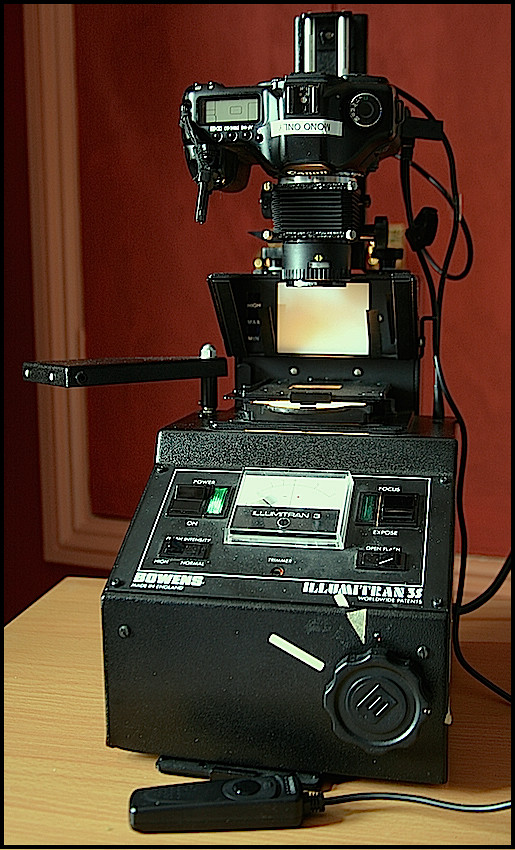I have an Epson V800 (remaindered by Park when the 850 came out), which I find a hassle.
Thought I'd spend half an hour building a proper rig to see if I can speed it up and get better results.
Bought a MiniSun LightPad for £35. Made a transport from some foamboard stolen from my son and some masking tape, to keep negs nice and flat.
Lens is the Leica R 60mm/f2.8 macro at f5.6 and camera at ISO250 1/45th on 2s delay.
Tripod is a 3 Legged Thing with the middle bit reversed.
Took the first negative at hand, 30 years old, tone curves inverted in LR6.
Easy easy and pleased.




Thought I'd spend half an hour building a proper rig to see if I can speed it up and get better results.
Bought a MiniSun LightPad for £35. Made a transport from some foamboard stolen from my son and some masking tape, to keep negs nice and flat.
Lens is the Leica R 60mm/f2.8 macro at f5.6 and camera at ISO250 1/45th on 2s delay.
Tripod is a 3 Legged Thing with the middle bit reversed.
Took the first negative at hand, 30 years old, tone curves inverted in LR6.
Easy easy and pleased.




Last edited:






